India Street, Arusha, Tanzania - East Africa

India Street, Arusha, Tanzania - East Africa

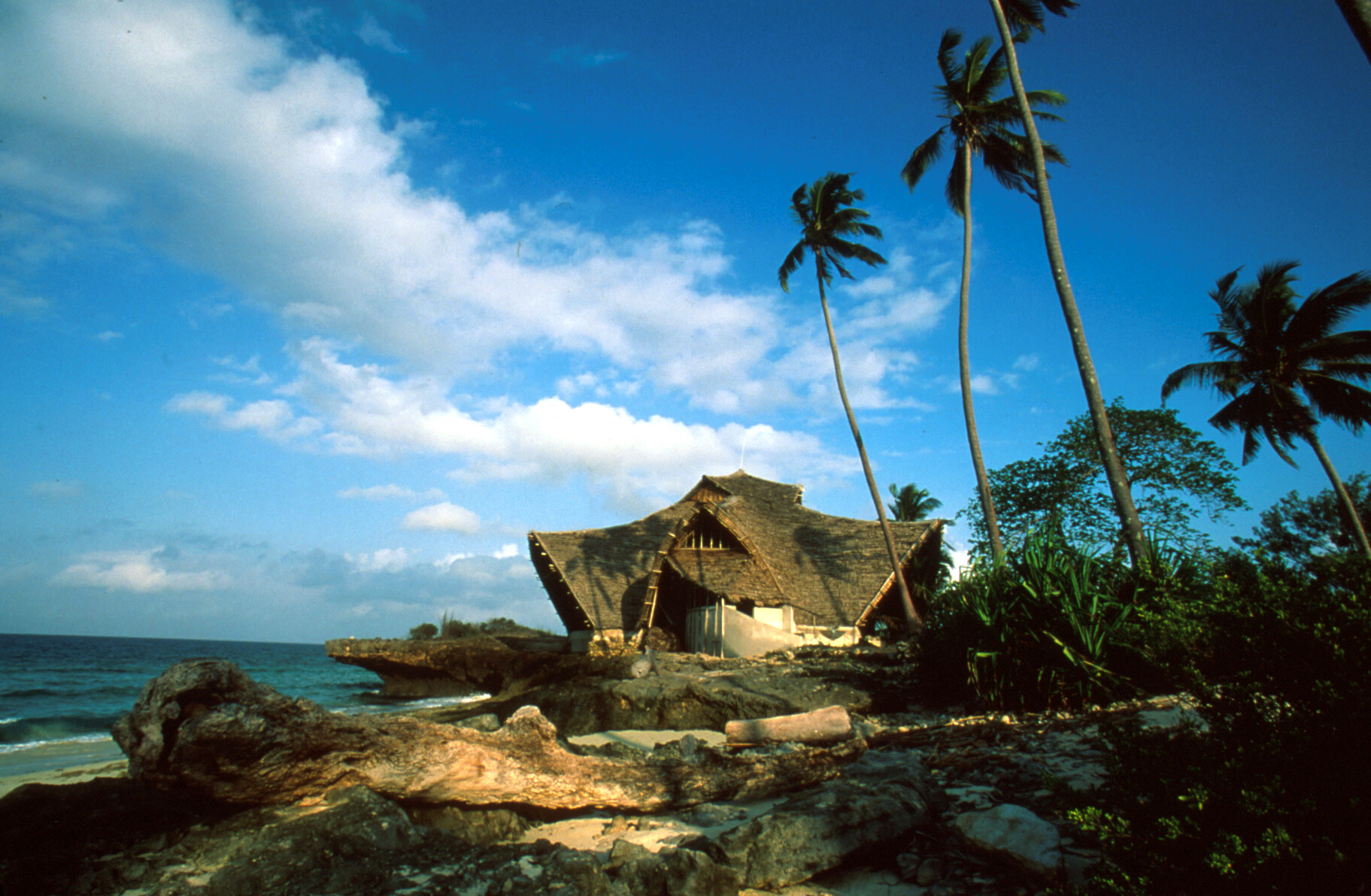
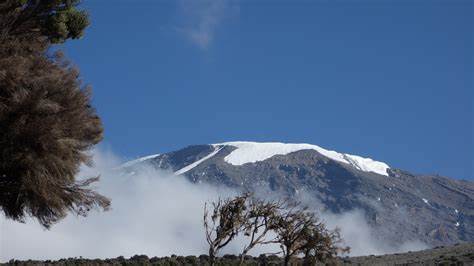
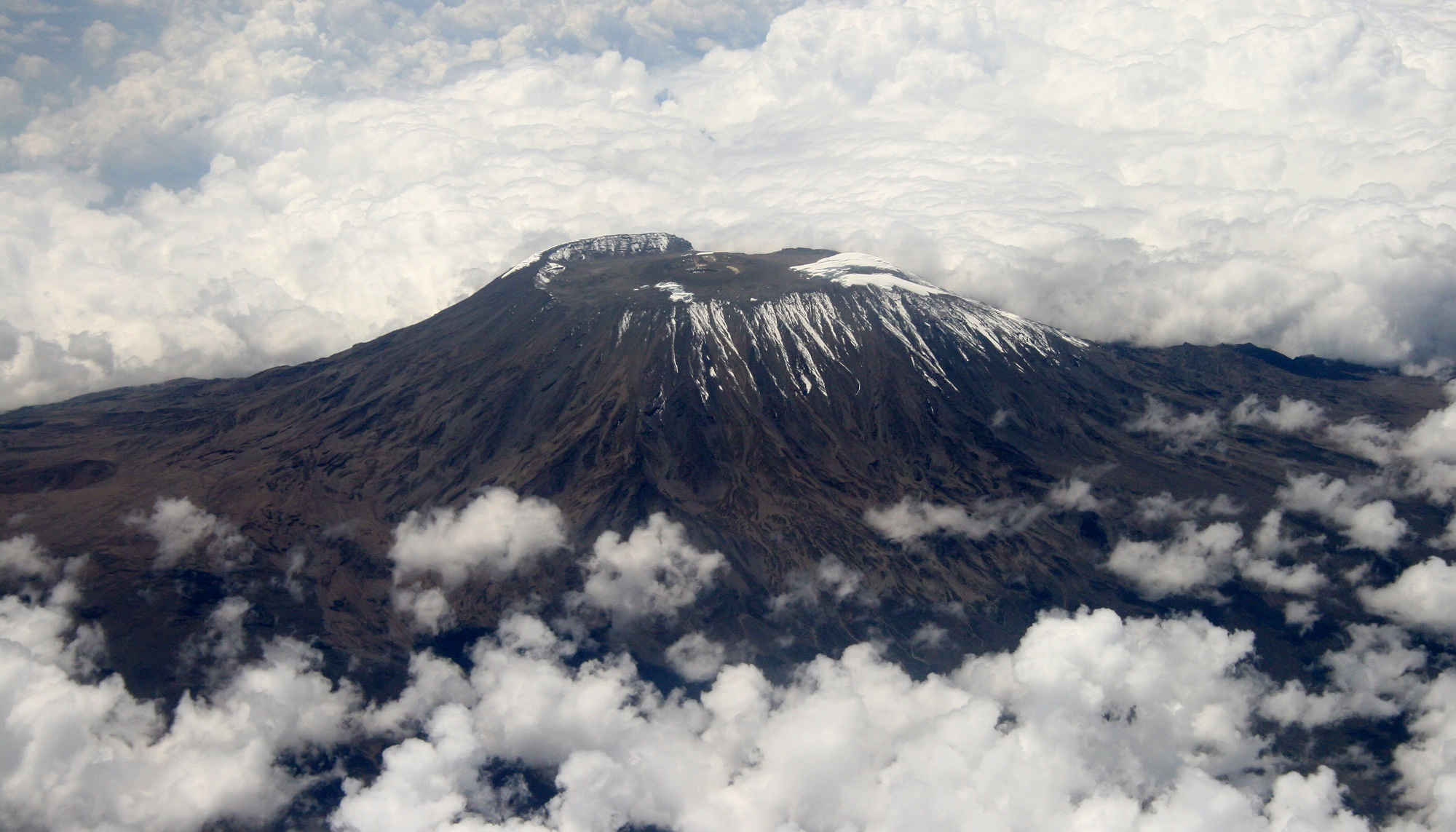
Kilimanjaro the name itself is a mystery wreathed in clouds. It might mean Mountain of Light, Mountain of Greatness or Mountain of Caravans. Or it might not. The local people, the Wachagga, don't even have a name for the whole massif, only Kipoo (now known as Kibo) for the familiar snowy peak that stands imperious, overseer of the continent, and the summit of Africa.
Kilimanjaro, by any name, is a metaphor for the compelling beauty of East Africa. When you see it, you understand why. Not only is this the highest peak on the African continent; it is also the tallest free-standing mountain in the world, rising in breathtaking isolation from the surrounding coastal scrubland – elevation around 900 meters – to an imperious 5,895 meters (19,336 feet).
Kilimanjaro is one of the world's most accessible high summits, a beacon for visitors from around the world. Most climbers reach the crater rim with little more than a walking stick, proper clothing and determination. And those who reach Uhuru Peak, the actual summit, or Gillman's Point on the lip of the crater, will have earned their climbing Diploma.
But there is so much more to Kili than her summit. The ascent of the slopes is a virtual climatic world tour, from the tropics to the Arctic. Even before you cross the national park boundary (at the 2,700m contour), the cultivated foot slopes give way to lush montane forest, inhabited by elusive elephant, leopard, buffalo, the endangered Abbot’s duiker, and other small antelope and primates. Higher still lays the moorland zone, where a cover of giant heather is studded with otherworldly giant lobelias.
Above 4,000m, a surreal alpine desert supports little life other than a few hardy mosses and lichen. Then, finally, the last vestigial vegetation gives way to a winter wonderland of ice and snow – and the magnificent beauty of the roof of the continent.
Climb slowly to increase your acclimatization time and maximize your chances of reaching the summit. To avoid altitude sickness, allow a minimum of five nights, preferably even more for the climb. Take your time and enjoy the beauty.
The best time to climb Kilimanjaro or Meru is June to early November during the dry season, when the sky is usually clear from clouds. Avoid rain season which starts March and ends in June, because the slopes are more slippery. However, the climbing can also be arranged any time of the year as per your schedule and plans.
At 19330ft, Uhuru Peak, the summit of Kilimanjaro, marks the highest point in Africa.
This is one of the most climbed of the world’s big mountains, and an iconic feature of the East African landscape.
Kilimanjaro is a freestanding volcanic cone, meaning that it does not belong to a mountain range, but rises majestically from the great Maasai Steppe with her sister peak, Mount Meru, a short distance away, and rising to 14980ft. Kilimanjaro is the highest volcanic feature of its type in the world.
Kilimanjaro is an attractive climb prospect for many who have never attempted a big mountain, and is generally served by a comprehensive fraternity of climb outfitters and specialist guides. There are many who say that Kilimanjaro is an easy mountain to climb, and although it is true that there are no technical aspects to summiting this great mountain, those who have done, even seasoned mountaineers, will admit that it is no walk in the park.
There are a variety of approaches to the summit of Kilimanjaro, with the easiest usually regarded as being Marangu Route(Coca Cola Route) and the most challenging being the Machame Route(Whisky Route) -Western Breach through Arrow Glacier. In between there is Lemosho Route, Shira Route, Umbwe Route, Maua Route and Rongai Route, each of which offers unique perspective of Kilimanjaro, and each a superb trekking experience in some of the world’s most beautiful and best preserved tropical highland habitat.
Marvel African Expeditions & Safaris offers several Kilimanjaro Routes Options, with longer or shorter versions depending on your preferences and interests as per Kilimanjaro Routes below:


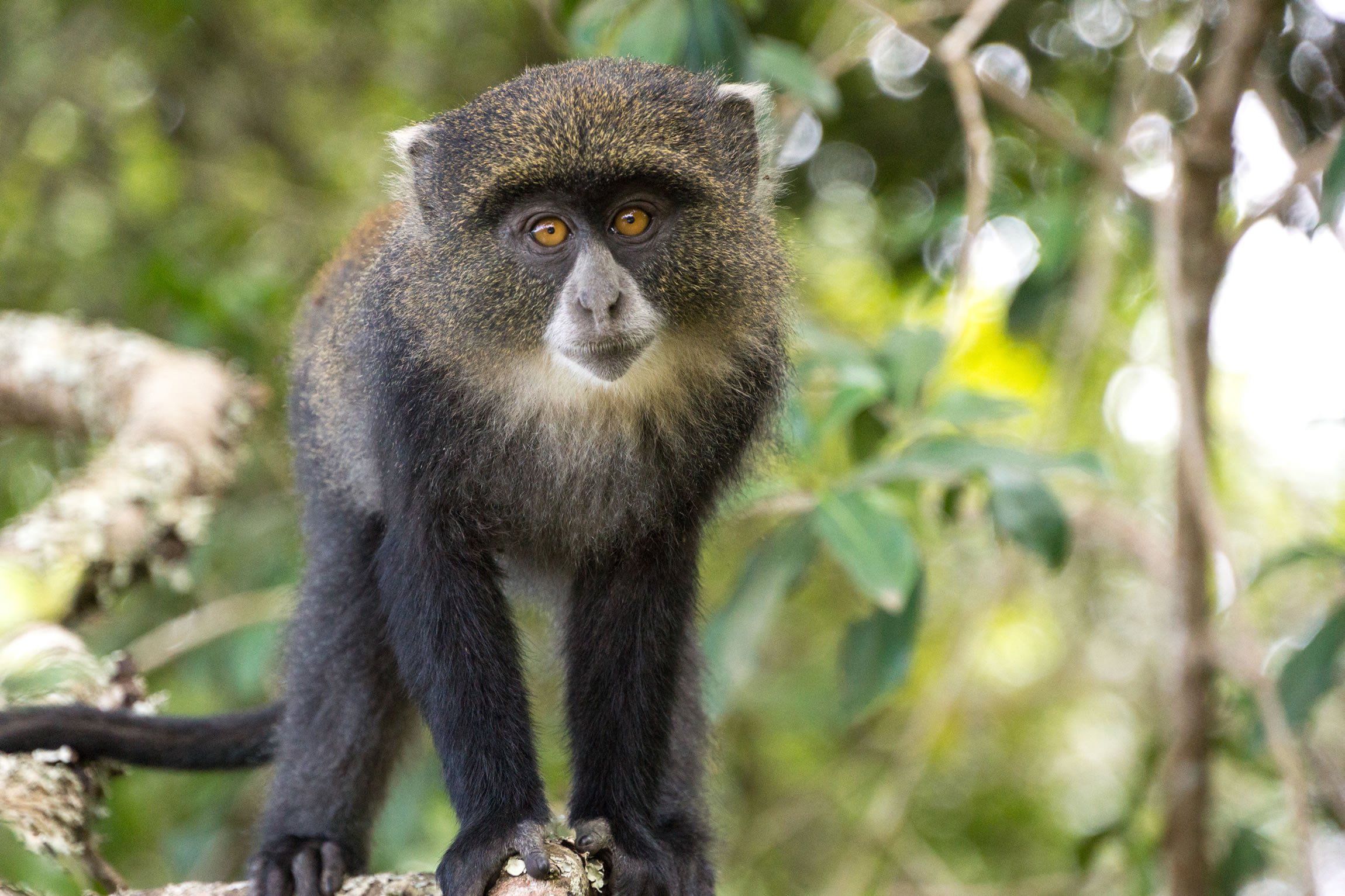
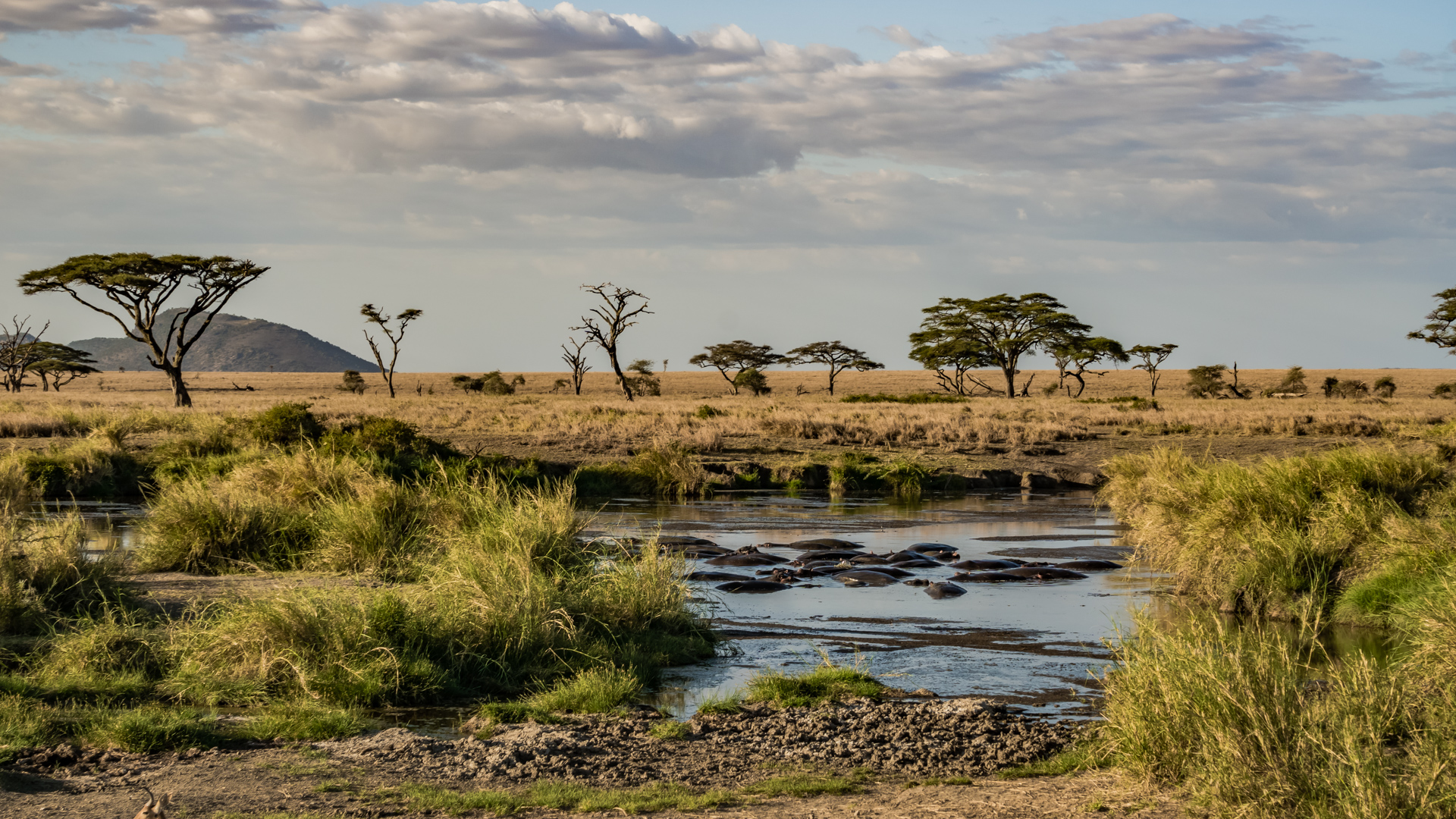
The closest national park to Arusha town – northern Tanzania’s safari capital – Arusha National Park is a multi-faceted jewel, often overlooked by safari goers, despite offering the opportunity to explore a beguiling diversity of habitats within a few hours.
The entrance gate leads into shadowy montane forest inhabited by inquisitive blue monkeys, Colobus monkey (blue and white), colorful turacos and trogons – the only place on the northern safari circuit where the acrobatic black-and-white colobus monkey is easily seen. In the midst of the forest stands the spectacular Ngurdoto Crater, whose steep, rocky cliffs enclose a wide marshy floor dotted with herds of buffalo and warthog.
Further north, rolling grassy hills enclose the tranquil beauty of the Momela Lakes, each one a different hue of green or blue. Their shallows sometimes tinged pink with thousands of flamingos, the lakes support a rich selection of resident and migrant waterfowl, and shaggy waterbucks display their large lyre-shaped horns on the watery fringes. Giraffes glide across the grassy hills, between grazing zebra herds, while pairs of wide-eyed dik-dik dart into scrubby bush like overgrown hares on spindly legs.
Although elephants are uncommon in Arusha National Park and lions absent altogether, leopards and spotted hyenas may be seen slinking around in the early morning and late afternoon. It is also at dusk and dawn that the veil of cloud on the eastern horizon is most likely to clear, revealing the majestic snow-capped peaks of Kilimanjaro, only 50km (30 miles) distant.
But it is Kilimanjaro unassuming cousin, Mount Meru - the fifth highest in Africa at 4,566 meters (14,990 feet) – that dominates the park’s horizon. Its peaks and eastern foot slopes protected within the national park. Mount Meru offers unparalleled views of its famous neighbor, while also forming a rewarding hiking destination in its own right.
Passing first through wooded savannah where buffalos and giraffes are frequently encountered, the ascent of Meru leads into forests aflame with red-hot pokers and dripping with Spanish moss, before reaching high open heath spiked with giant lobelias. Everlasting flowers cling to the alpine desert, as delicately-hoofed klipspringers mark the hike’s progress. Astride the craggy summit, Kilimanjaro stands unveiled, blushing in the sunrise.
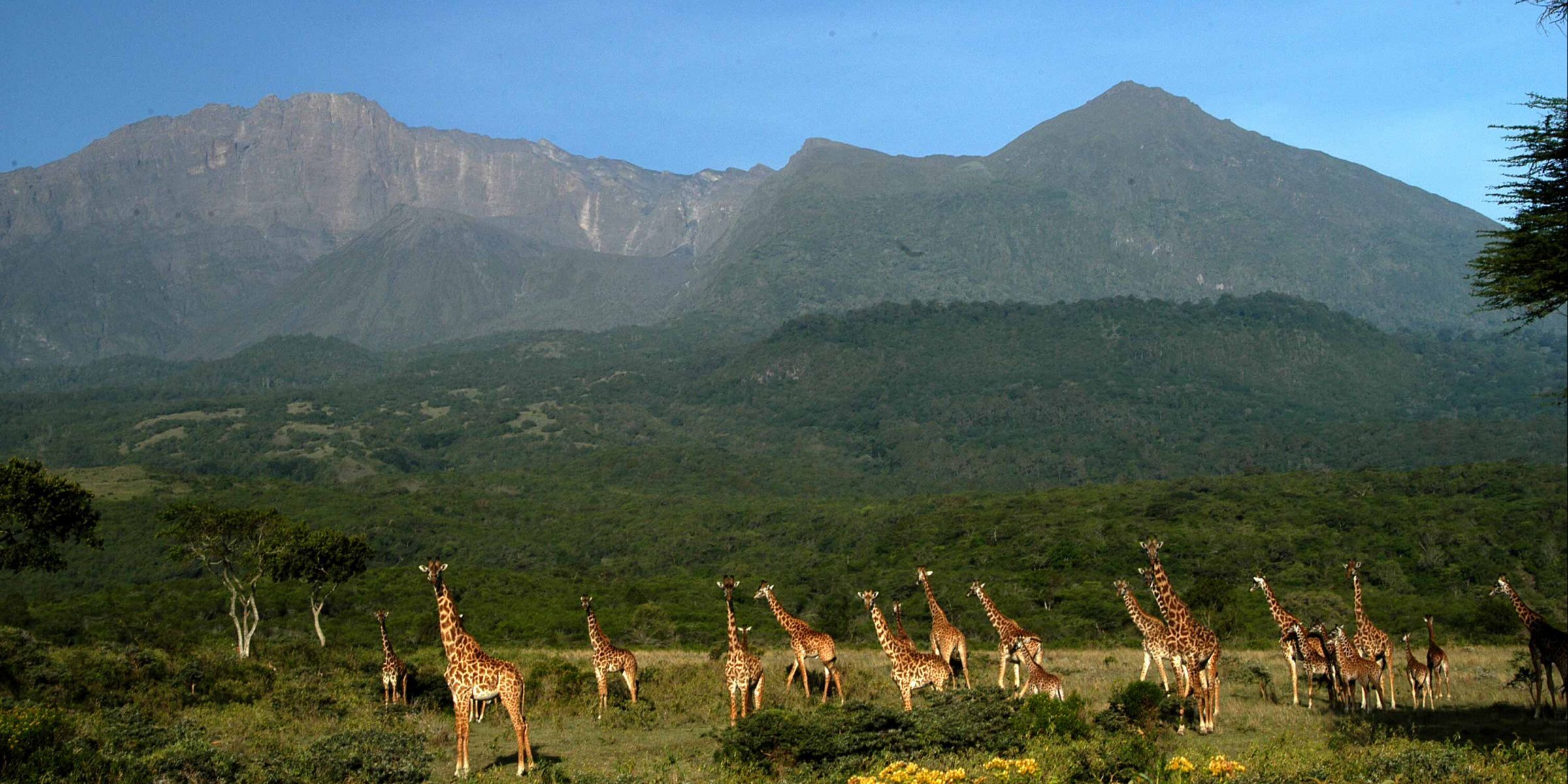

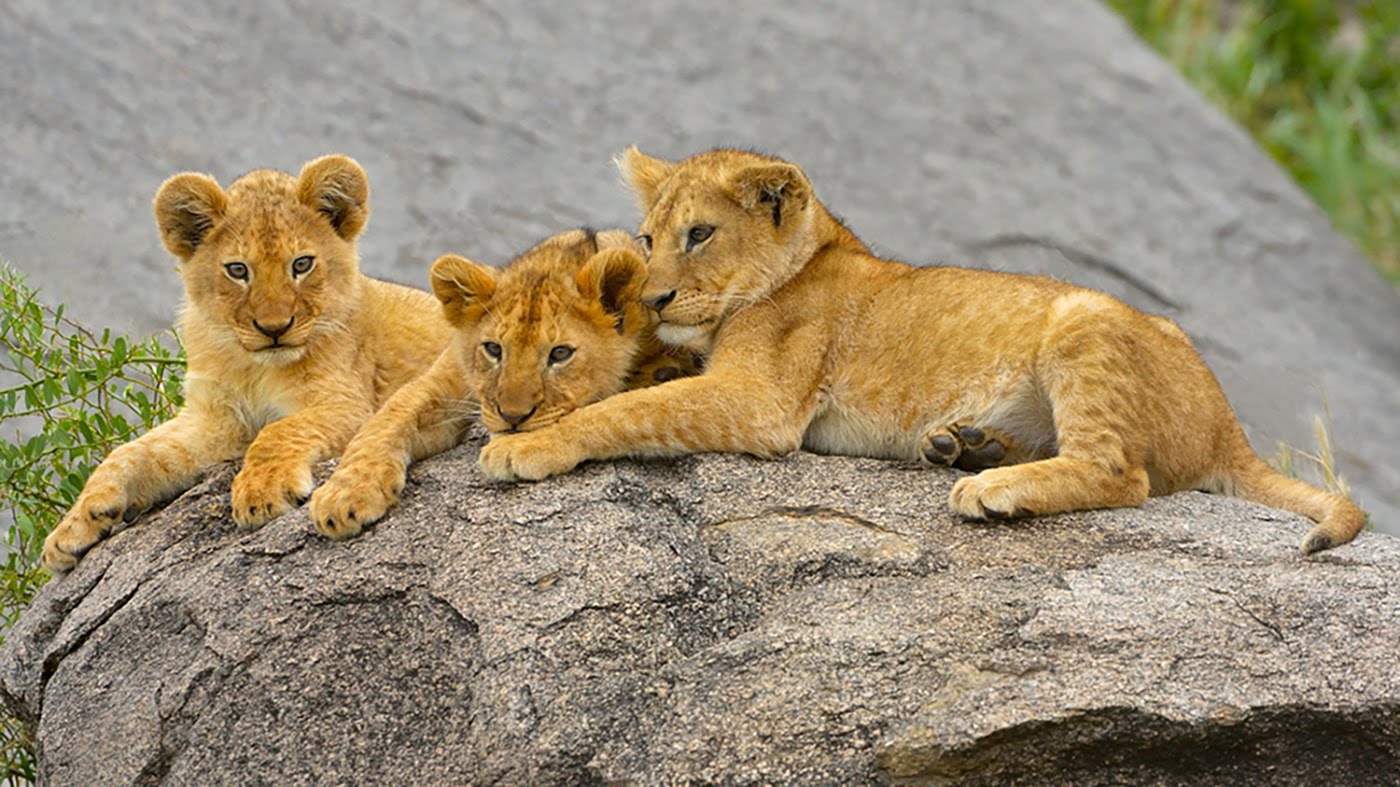
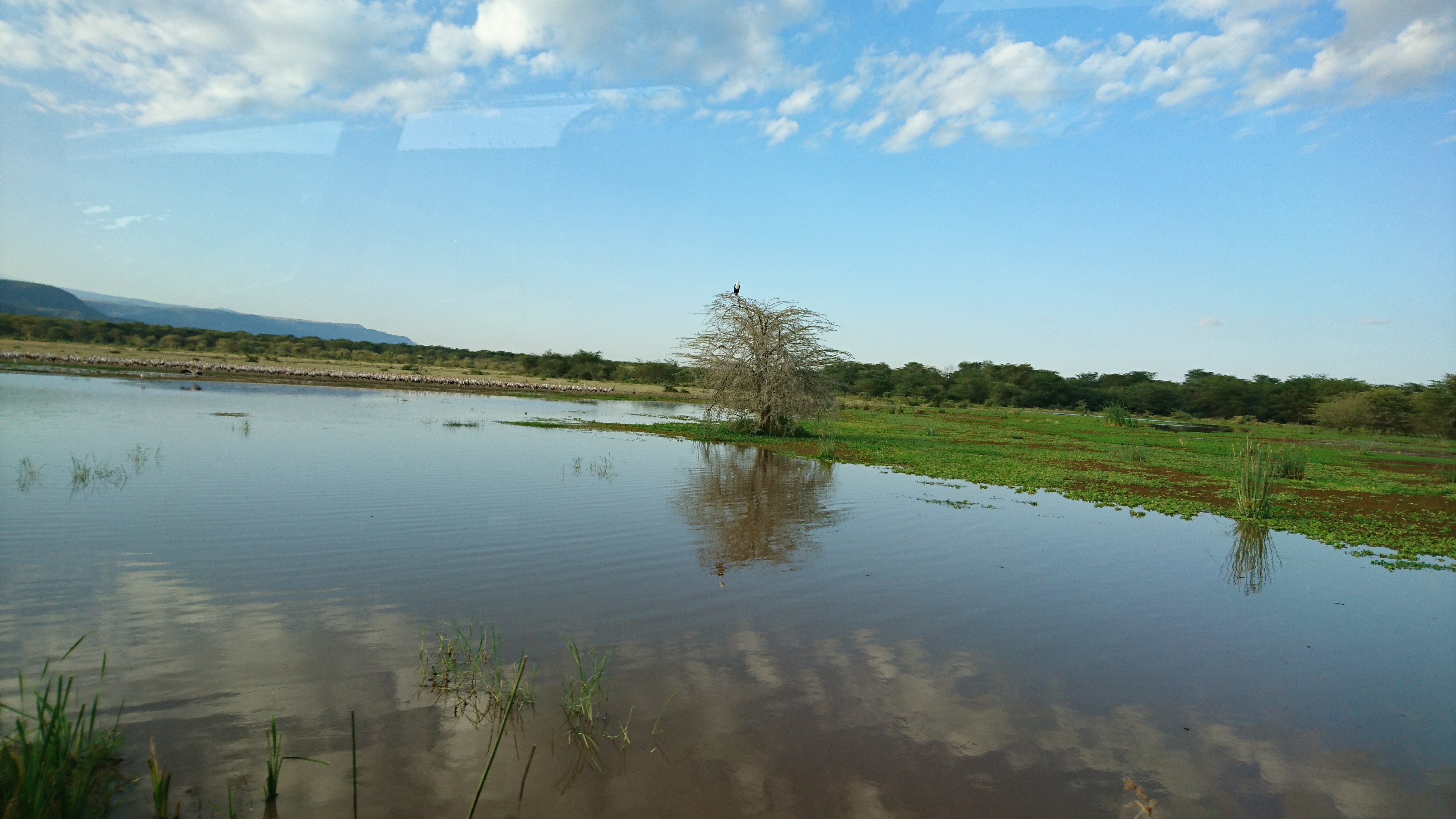
Stretching 50km along the base of the rusty-gold 600-metre high Rift Valley escarpment, Lake Manyara is a scenic gem, with a setting extolled by Ernest Hemingway as “the loveliest I had seen in Africa”.
The compact game-viewing circuit through Manyara offers a virtual microcosm of the Tanzanian safari experience. From the entrance gate, the road winds through an expanse of lush jungle-like groundwater forest where hundred-strong baboon troops lounge nonchalantly along the roadside, blue monkeys scamper nimbly between the ancient mahogany trees, dainty bushbuck tread warily through the shadows, and outsized forest hornbills honk cacophonously in the high canopy.
Contrasting with the intimacy of the forest is the grassy floodplain and its expansive views eastward, across the alkaline lake, to the jagged blue volcanic peaks that rise from the endless Maasai Steppes. Large buffalo, wildebeest and zebra herds congregate on these grassy plains, as do giraffes – some so dark in coloration that they appear to be black from a distance.
Inland of the floodplain, a narrow belt of acacia woodland is the favored haunt of Manyara’s legendary tree-climbing lions and impressively tusked elephants. Squadrons of banded mongoose dart between the acacias, while the diminutive Kirk’s dik-dik forages in their shade. Pairs of klipspringer are often seen silhouetted on the rocks above a field of searing hot springs that steams and bubbles adjacent to the lakeshore in the far south of the park.
Manyara provides the perfect introduction to Tanzania’s birdlife. More than 400 species have been recorded, and even a first-time visitor to Africa might reasonably expect to observe 100 of these in one day. Highlights include thousands of pink-hued flamingos on their perpetual migration, as well as other large water birds such as pelicans, cormorants and storks.
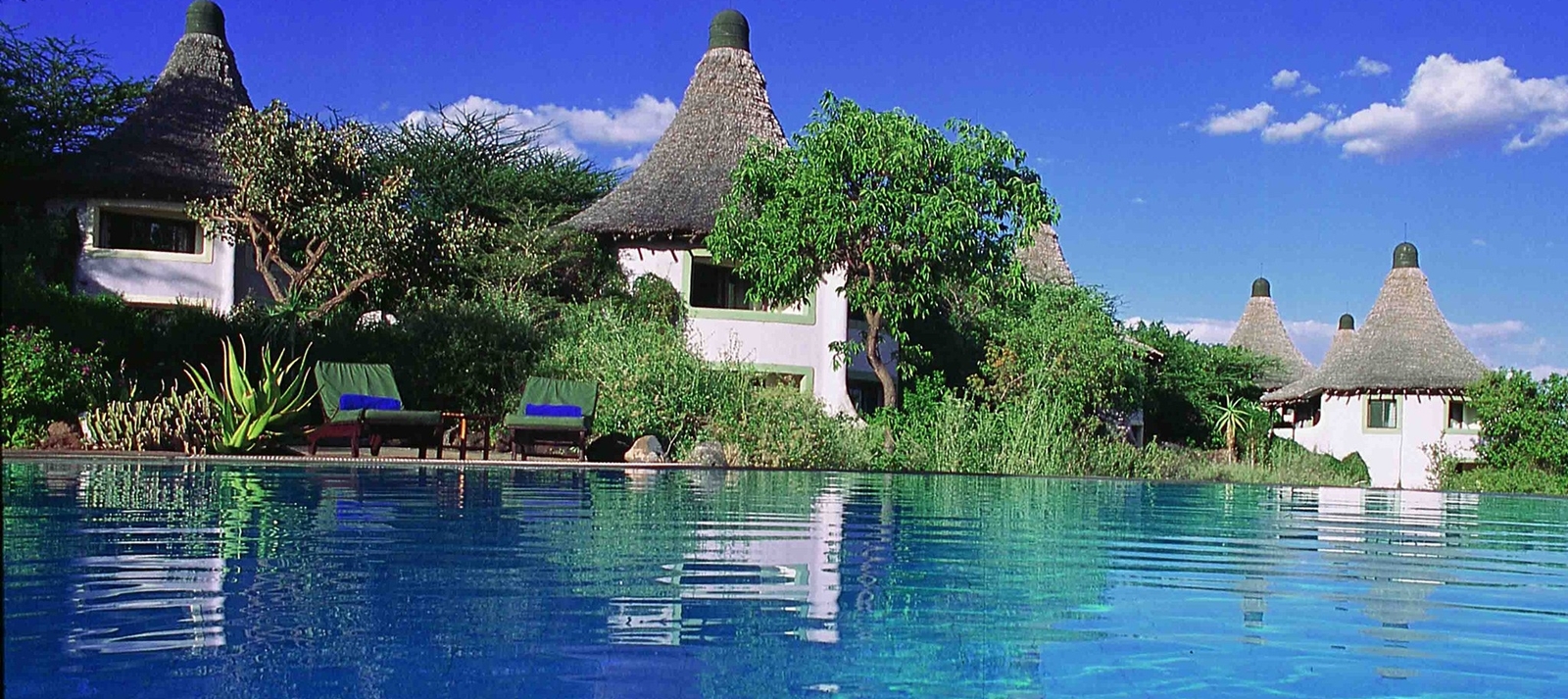
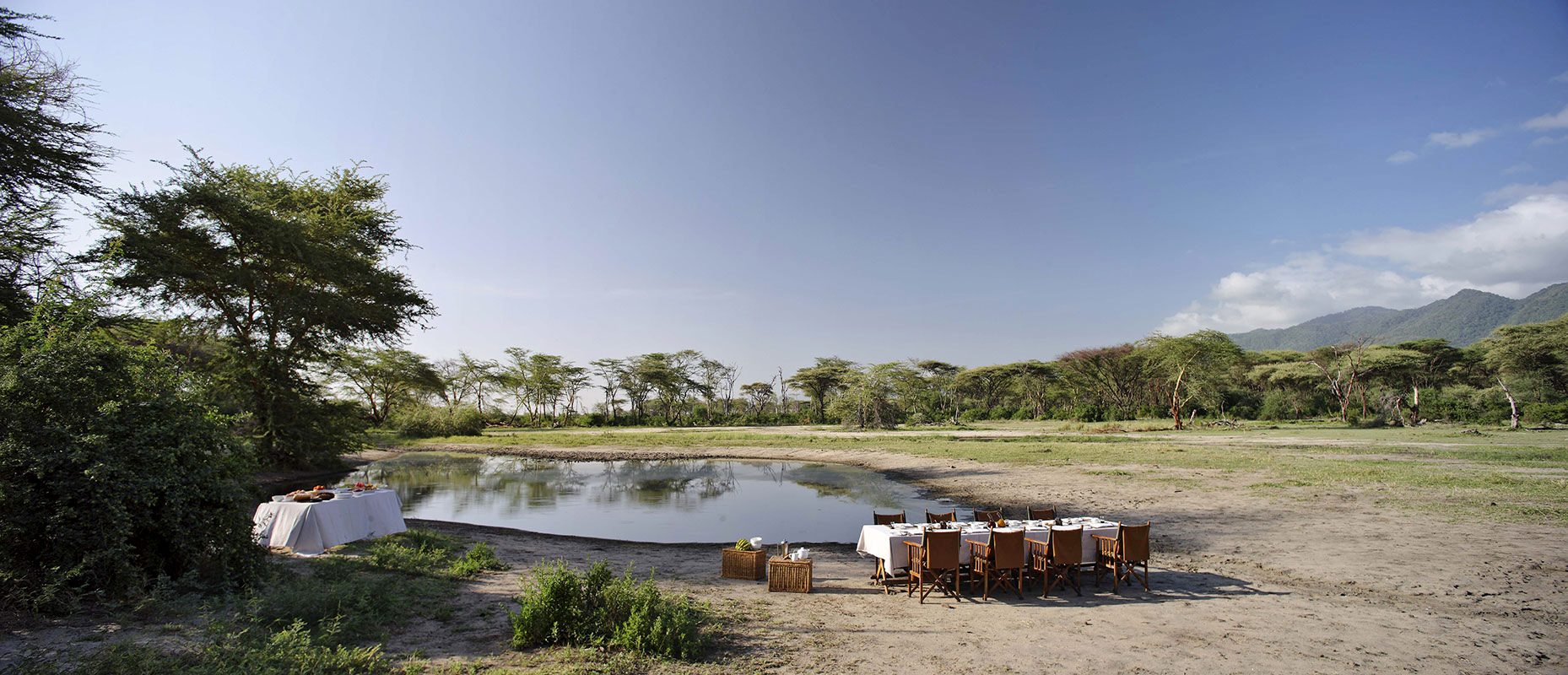
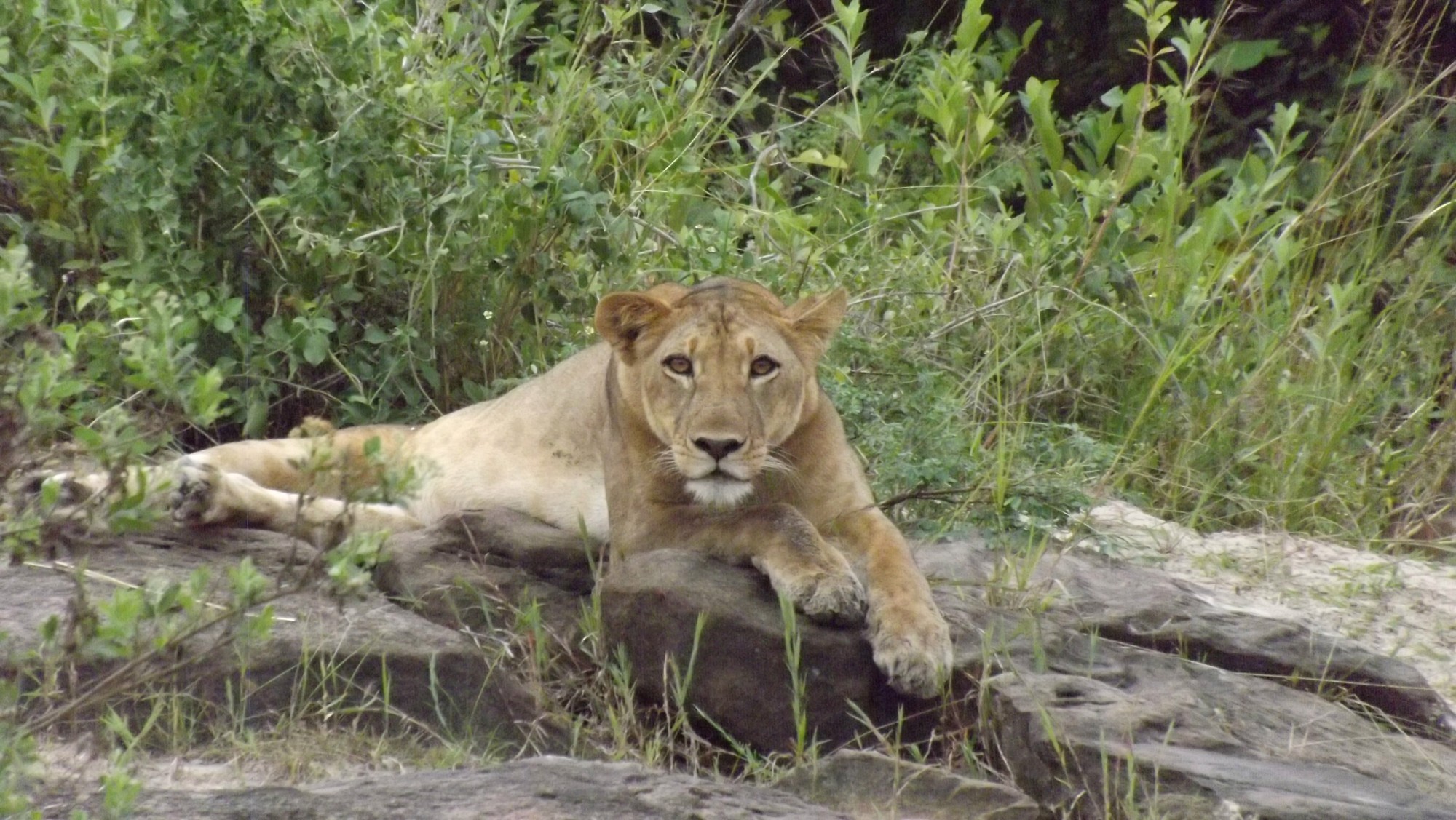
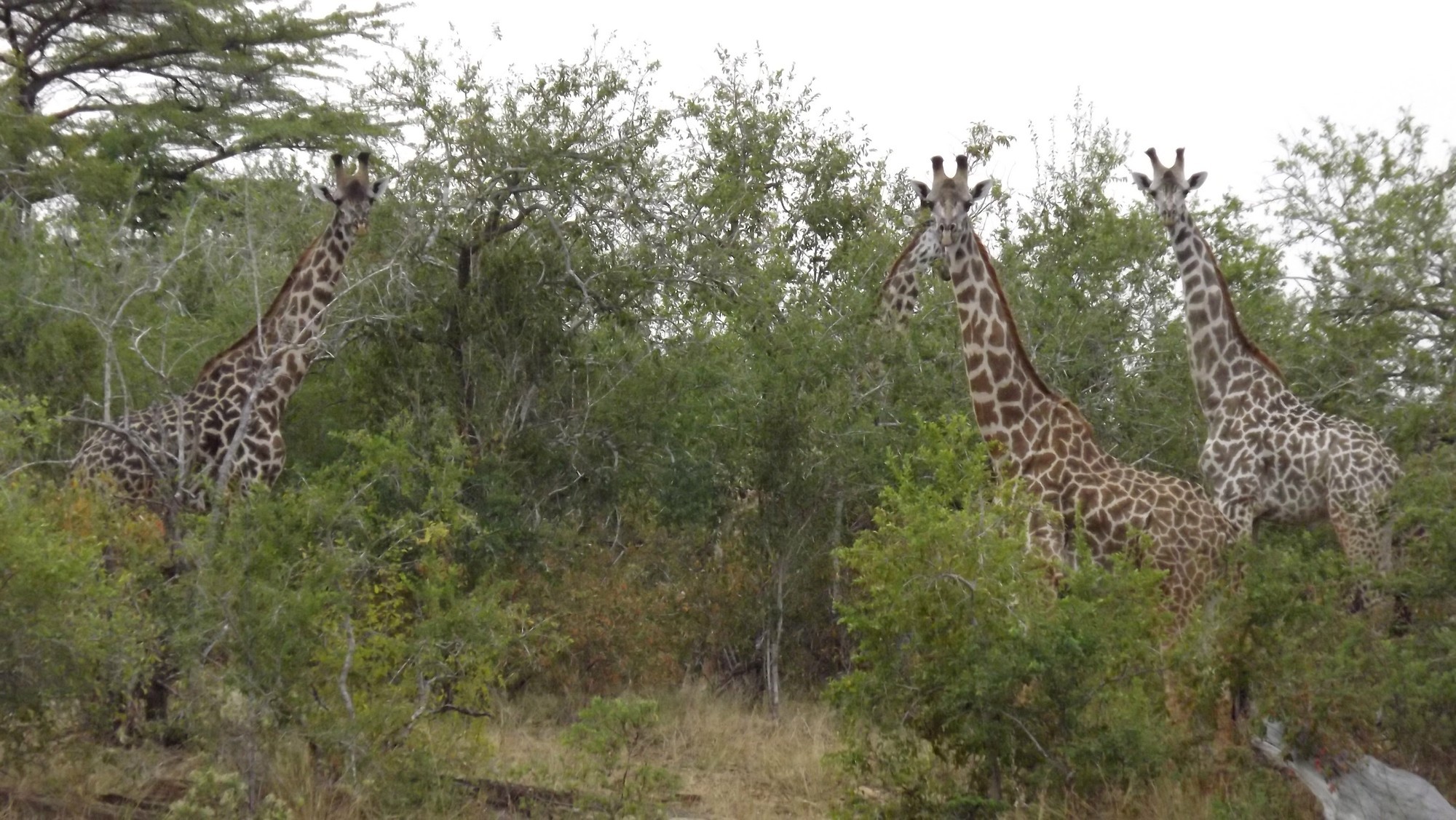
Day after day of cloudless skies; the fierce sun sucks the moisture from the landscape, baking the earth a dusty red, the withered grass as brittle as straw. The Tarangire River has shriveled to a shadow of its wet season self. But it is choked with wildlife. Thirsty nomads have wandered hundreds of parched kilometers knowing that here, always, there is water. Herds of up to 300 elephants scratch the dry river bed for underground streams, while buffalos, impala, gazelle, hartebeest and eland crowd the shrinking lagoons.
It's the greatest concentration of wildlife outside the Serengeti ecosystem - a smorgasbord for predators – and the one place in Tanzania where dry-country antelope such as the stately fringe-eared Oryx and peculiar long-necked gerenuk are regularly observed. During the rainy season, the seasonal visitors scatter over a 20,000 sq km (12,500 sq miles) range until they exhaust the green plains and the river calls once more. But Tarangire mobs of elephant are easily encountered, wet or dry.
The swamps, tinged green year round, are the focus for 550 bird varieties, the most breeding species in one habitat anywhere in the world. On drier ground you find the Kori bustard, the heaviest flying bird; the stocking-thighed ostrich, the world's largest bird; and small parties of ground hornbills blustering like turkeys.
More ardent bird-lovers might keep an eye open for screeching flocks of the dazzlingly colorful yellow-collared lovebird, and the somewhat drabber refocus-tailed weaver and ashy starling – all endemic to the dry savannah of north-central Tanzania.
Disused termite mounds are often frequented by colonies of the endearing dwarf mongoose, and pairs of red-and-yellow barbet, which draw attention to themselves by their loud, clockwork-like dieting.
Tarangire pythons climb trees, as do its lions and leopards, lounging in the branches where the fruit of the sausage tree disguises the twitch of a tail.
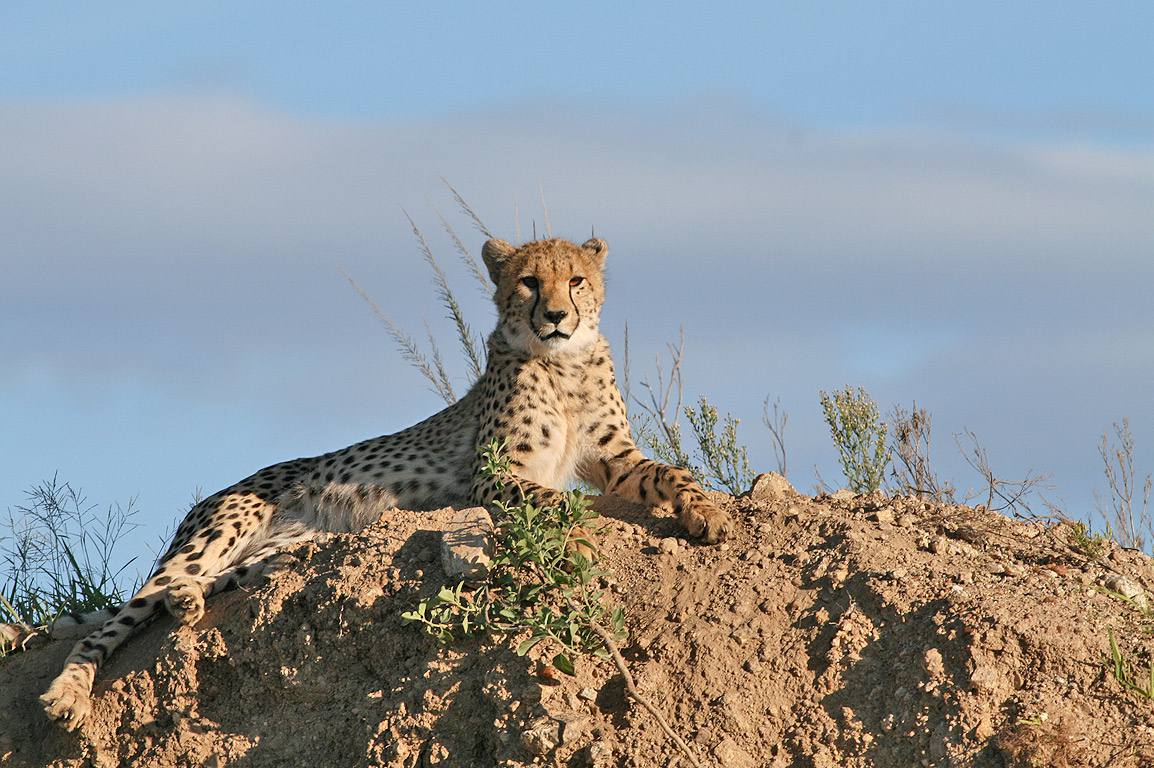
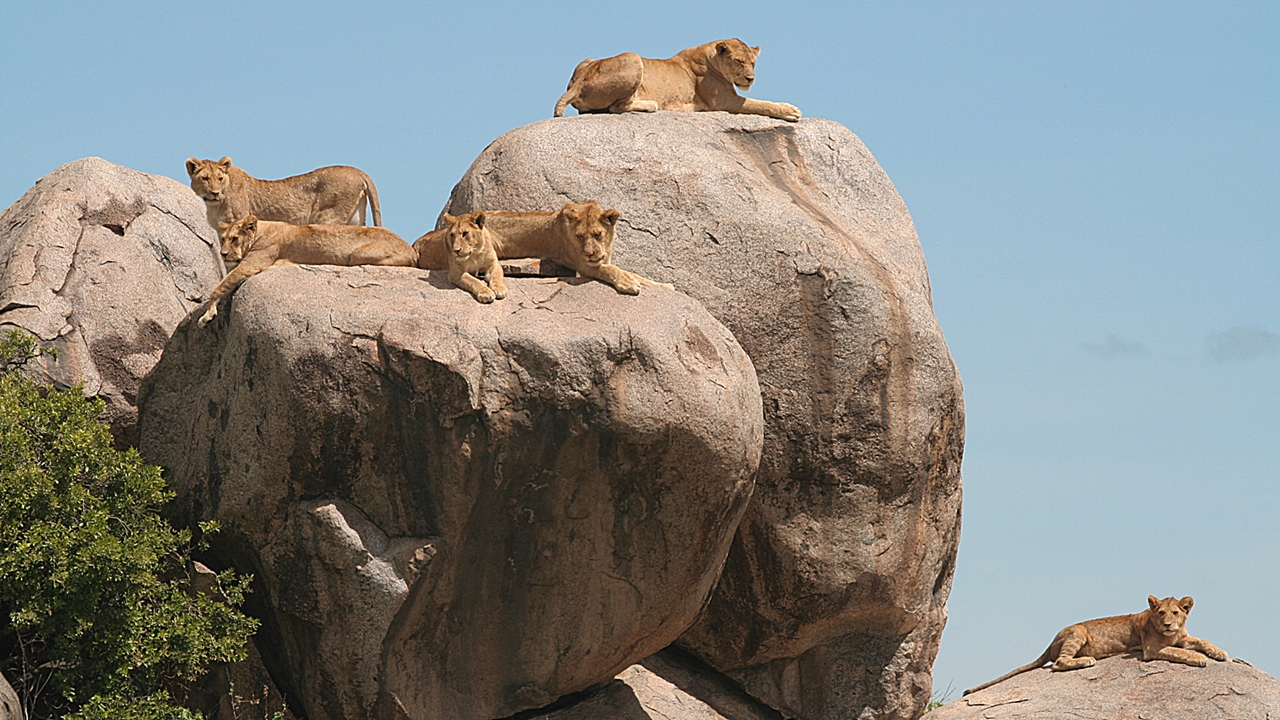
A million wildebeest... each one driven by the same ancient rhythm, fulfilling its instinctive role in the inescapable cycle of life: a frenzied three-week bout of territorial conquests and mating; survival of the fittest as 40km (25 mile) long columns plunge through crocodile-infested waters on the annual exodus north; replenishing the species in a brief population explosion that produces more than 8,000 calves daily before the 1,000 km (600 mile) pilgrimage begins again.
Tanzania's oldest and most popular national park, the Serengeti is famed for its annual migration, when some six million hooves pound the open plains, as more than 200,000 zebra and 300,000 Thomson's gazelle join the wildebeest’s trek for fresh grazing. Yet even when the migration is quiet, the Serengeti offers arguably the most scintillating game-viewing in Africa: great herds of buffalo, smaller groups of elephant and giraffe, and thousands upon thousands of eland, topi, kongoni, impala and Grant’s gazelle.
The spectacle of predator versus prey dominates Tanzania’s greatest park. Golden-maned lion prides feast on the abundance of plain grazers. Solitary leopards haunt the acacia trees lining the Seronera River, while a high density of cheetahs prowls the southeastern plains. Almost uniquely, all three African jackal species occur here, alongside the spotted hyena and a host of more elusive small predators, ranging from the insectivorous aardwolf to the beautiful serval cat.
But there is more to Serengeti than large mammals. Gaudy agama lizards and rock hyraxes scuffle around the surfaces of the park’s isolated granite koppies. A full 100 varieties of dung beetle have been recorded, as have 500-plus bird species, ranging from the outsized ostrich and bizarre secretary bird of the open grassland, to the black eagles that soar effortlessly above the Lobo Hills.
As enduring as the game-viewing is the liberating sense of space that characterizes the Serengeti Plains, stretching across sun burnt savannah to a shimmering golden horizon at the end of the earth. Yet, after the rains, this golden expanse of grass is transformed into an endless green carpet flecked with wildflowers. In addition, there are wooded hills and towering termite mounds, rivers lined with fig trees and acacia woodland stained orange by dust. Popular the Serengeti might be, but it remains so vast that you may be the only human audience when a pride of lions masterminds a siege, focused unswervingly on its next meal.
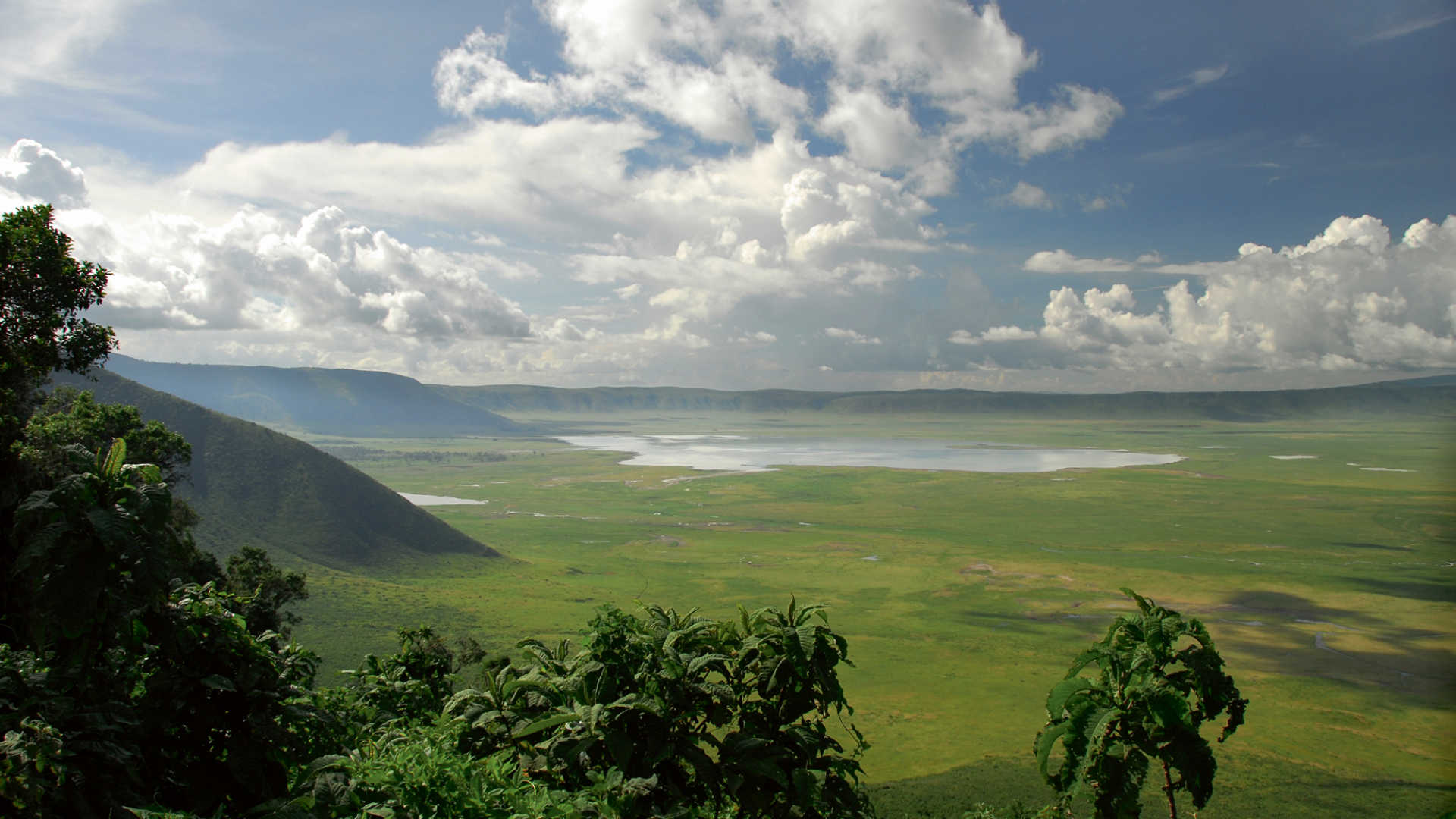
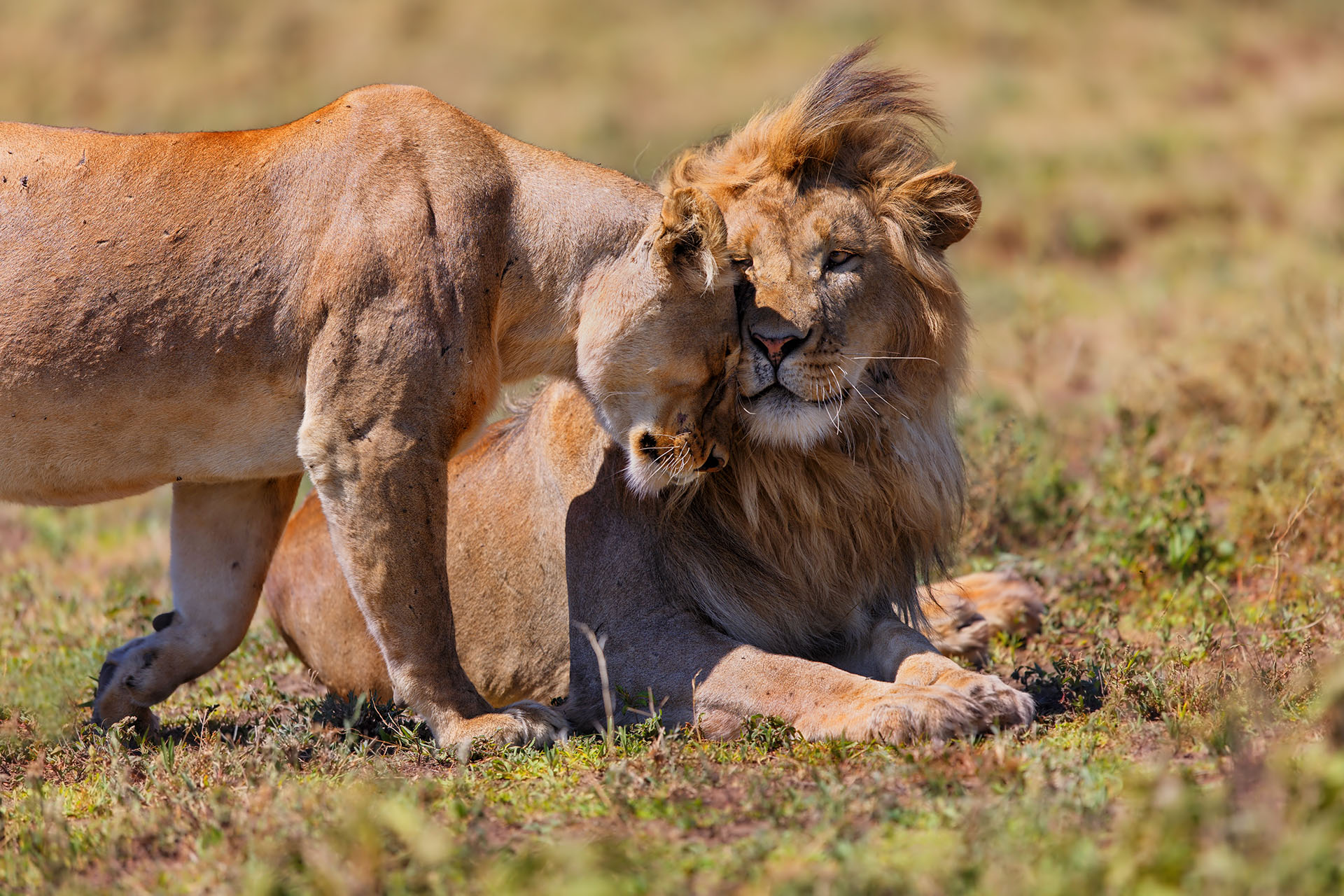
Ngorongoro crater at 2286km above sea level is the largest and huge unbroken caldera in the world. Very steep walls rising 610m from the crater floor surround it. It is a natural am phi-theatre, which measures 19.2kms in diameter and 304 sp kms in area. It is a home to up to 30000 animals including some of Tanzania’s last remaining black rhino. The rhino emerge from the forests in the mists of early morning, and their pre historic figures making a striking impression, surrounded by the ancient crater walls. Animals are free to enter or leave the crater, but many of them stay for the plentiful water and grazing available on the crater floor through out the year.


Set below the verdant slopes of the spectacular Usambara and Pare Eastern Arc Mountain ranges and overseen by iconic snow – capped peak of Kilimanjaro, Mkomazi a virgin breathtaking beauty exhibiting unique natural treasures and immense sense of space - add to the fulfillment of high visitor enjoyment expectations – a much needed bridge between northern circuit and coastal attractions.
Everyday, thousands of people pass within a few kilometers of Mkomazi on one of Tanzania’s busiest highways. These and northern circuit safari – goers are now most welcome to discover the treasures of this wedge of hilly semi – arid savannah – home of large herds of giraffe, eland, hartebeest, zebra, buffalo and elephant.
Mkomazi is vital refuge for two highly endangered species, the charismatic black rhino and sociable African wild dog, both of which were successfully reintroduced in the 1990s. Nomadic by nature, wild dog might be seen almost anywhere in the park, but black rhino are restricted to a fenced sanctuary, ensuring their safe keeping for future generations enjoyment and prosperity.
Mkomazi supports several dry – country specialists’ species that are rare elsewhere in Tanzania; these include the spectacular fringe – eared oryx, with its long back – sweeping horns, and the handsome spiral – horned lesser kudu. Oddest of all is the gerenuk, a gazelle distinguished by its slender neck, bizarre alien – like head, and habit of standing tall on its hind legs stretch for acacia leaves that other browsers cannot reach.
A game reserve since 1951, this new National Park takes its name from Pare tribe’s word for “scoop of water”, referring to little water. It is a fantastic destination for birdwatchers, with more than 450 avian species recorded, among them dry – country endemics such as the cobalt – chested vulturine guinea fowl, other large ground birds such as ostrich, kori bustard, secretary bird, ground hornbill and some migratory species including Eurasian roller.


Palm trees sway in a cooling oceanic breeze. White and blue water sparkle alluringly beneath the tropical sun. Traditional dhows sail slowly past, propelled by billowing white sails, while Swahili fishermen cast their nets below a brilliant red sunrise.
Saadani is where the beach meets the bush. The only wildlife sanctuary in East Africa to boast an Indian Ocean beachfront, it possesses all the attributes that make Tanzania’s tropical coastline and islands so popular with European sun-worshippers. Yet it is also the one place where those idle hours of sunbathing might be interrupted by an elephant strolling past, or a lion coming to drink at the nearby waterhole!
Protected as a game reserve since the 1960s, in 2002 it was expanded to cover twice its former area. The reserve suffered greatly from poaching prior to the late 1990s, but recent years have seen a marked turnaround, due to a concerted clampdown on poachers, based on integrating adjacent villages into the conservation drive.
Today, a surprisingly wide range of grazers and primates is seen on game drives and walks, among them giraffe, buffalo, warthog, common waterbuck, reedbuck, hartebeest, wildebeest, red duiker, greater kudu, eland, sable antelope, yellow baboon and velvet monkey.
Herds of up to 30 elephants are encountered with increasing frequency, and several lion prides are resident, together with leopard, spotted hyena and black-backed jackal. Boat trips on the mangrove-lined Wami River come with a high chance of sighting hippos, crocodiles and a selection of marine and revering birds, including the mangrove kingfisher and lesser flamingo, while the beaches form one of the last major green turtle breeding sites on mainland Tanzania.


Swirls of opaque mist hide the advancing dawn. The first shafts of sun color the fluffy grass heads rippling across the plain in a russet halo. A herd of zebras, confident in their camouflage at this predatory hour, pose like ballerinas, heads aligned and stripes merging in flowing motion.
Mikumi National Park abuts the northern border of Africa's biggest game reserve - the Selous – and is transected by the surfaced road between Dar es Salaam and Iringa. It is thus the most accessible part of a 75,000 square kilometer (47,000 square mile) tract of wilderness that stretches east almost as far as the Indian Ocean.
The open horizons and abundant wildlife of the Mkata Floodplain, the popular centerpiece of Mikumi, draw frequent comparisons to the more famous Serengeti Plains.
Lions survey their grassy kingdom – and the zebra, wildebeest, impala and buffalo herds that migrate across it – from the flattened tops of termite mounds, or sometimes, during the rains, from perches high in the trees. Giraffes forage in the isolated acacia stands that fringe the Mkata River, islets of shade favored also by Mikumi's elephants.
Criss-crossed by a good circuit of game-viewing roads, the Mkata Floodplain is perhaps the most reliable place in Tanzania for sightings of the powerful eland, the world’s largest antelope. The equally impressive greater kudu and sable antelope haunt the miombo-covered foothills of the mountains that rise from the park’s borders.
More than 400 bird species have been recorded, with such colorful common residents as the lilac-breasted roller, yellow-throated long claw and bateleur eagle joined by a host of European migrants during the rainy season. Hippos are the star attraction of the pair of pools situated 5km north of the main entrance gate, supported by an ever-changing cast of water birds.

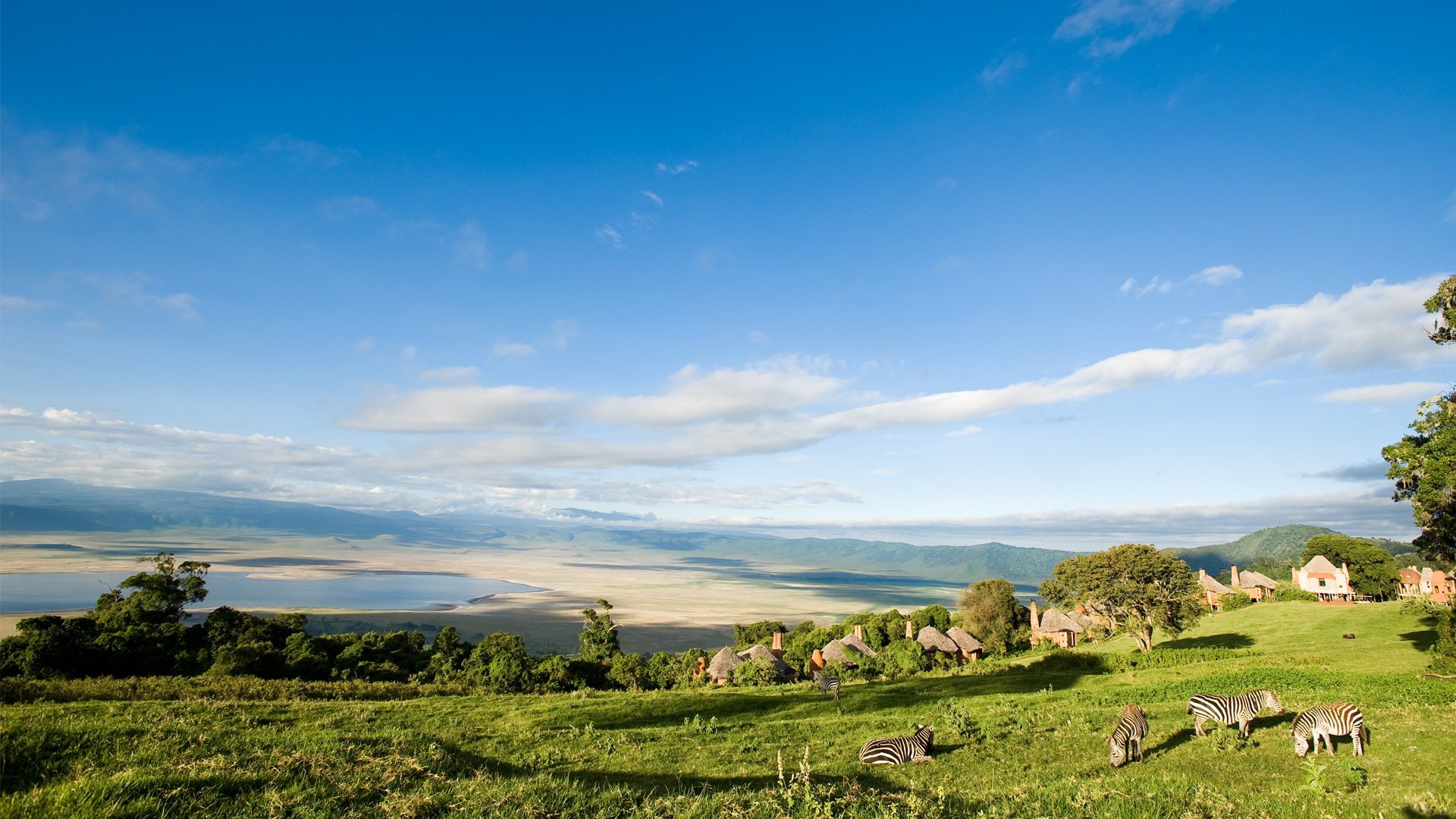
Brooding and primeval, the forests of Udzungwa seem positively enchanted: a verdant refuge of sunshine-dappled glades enclosed by 30-metre (100 foot) high trees, their buttresses layered with fungi, lichens, mosses and ferns.
Udzungwa is the largest and most biodiversity of a chain of a dozen large forest-swathed mountains that rise majestically from the flat coastal scrub of eastern Tanzania. Known collectively as the Eastern Arc Mountains, this archipelago of isolated massifs has also been dubbed the African Galapagos for its treasure-trove of endemic plants and animals, most familiarly the delicate African violet.
Udzungwa alone among the ancient ranges of the Eastern Arc has been accorded national park status. It is also unique within Tanzania in that its closed-canopy forest spans altitudes of 250 meters (820 feet) to above 2,000 meters (6,560 ft) without interruption.
Not a conventional game viewing destination, Udzungwa is a magnet for hikers. An excellent network of forest trails includes the popular half-day ramble to Sanje Waterfall, which plunges 170 meters (550 feet) through a misty spray into the forested valley below.
The more challenging two-night Mwanihana Trail leads to the high plateau, with its panoramic views over surrounding sugar plantations, before ascending to Mwanihana peak, the second-highest point in the range.
The more challenging two-night Mwanihana Trail leads to the high plateau, with its panoramic views over surrounding sugar plantations, before ascending to Mwanihana peak, the second-highest point in the range.
Ornithologists are attracted to Udzungwa for an avian wealth embracing more than 400 species, from the lovely and readily-located green-headed oriole to more than a dozen secretive Eastern Arc endemics.
Four bird species are peculiar to Udzungwa, including a forest partridge first discovered in 1991 and more closely related to an Asian genus than to any other African fowl.
Of six primate species recorded, the Iringa red colobus and Sanje Crested Mangabey both occur nowhere else in the world – the latter, remarkably, remained undetected by biologists prior to 1979.
Undoubtedly, this great forest has yet to reveal all its treasures: ongoing scientific exploration will surely add to its diverse catalogue of endemics.

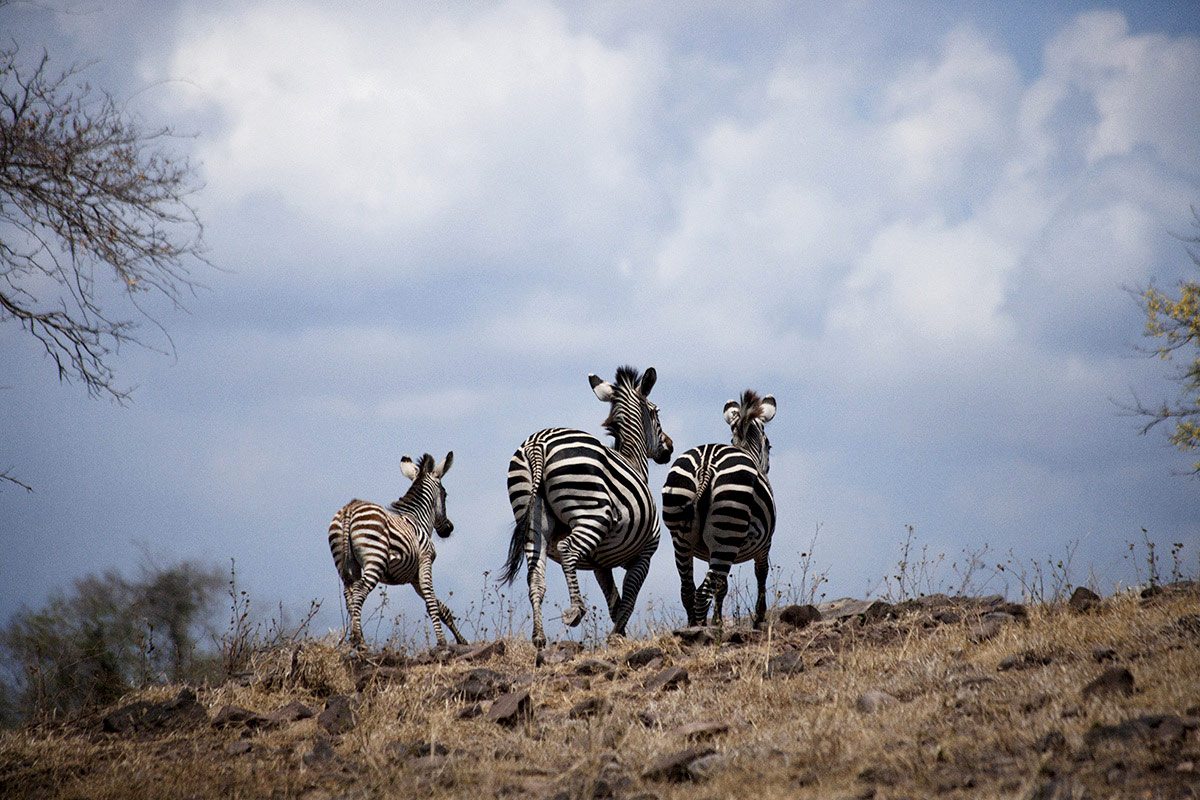
The game viewing starts the moment the plane touches down. A giraffe races beside the airstrip, all legs and neck, yet oddly elegant in its awkwardness. A line of zebras parades across the runway in the giraffe's wake.
In the distance, beneath a bulbous baobab tree, a few representatives of Ruaha's 10,000 elephants - the largest population of any East African national park, form a protective huddle around their young.
Second only to Katavi in its aura of untrammeled wilderness, but far more accessible, Ruaha protects a vast tract of the rugged, semi-arid bush country that characterizes central Tanzania. Its lifeblood is the Great Ruaha River, which courses along the eastern boundary in a flooded torrent during the height of the rains, but dwindling thereafter to a scattering of precious pools surrounded by a blinding sweep of sand and rock.
A fine network of game-viewing roads follows the Great Ruaha and its seasonal tributaries, where, during the dry season, impala, waterbuck and other antelopes risk their life for a sip of life-sustaining water. And the risk is considerable: not only from the prides of 20-plus lion that lord over the savannah, but also from the cheetahs that stalk the open grassland and the leopards that lurk in tangled revering thickets. This impressive array of large predators is boosted by both striped and spotted hyena, as well as several conspicuous packs of the highly endangered African wild dog.
Ruaha's unusually high diversity of antelope is a function of its location, which is transitional to the acacia savannah of East Africa and the miombo woodland belt of Southern Africa. Grant's gazelle and lesser kudu occur here at the very south of their range, alongside the miombo-associated sable and roan antelope, and one of East Africa’s largest populations of greater kudu, the park emblem, distinguished by the male's magnificent corkscrew horns.
A similar duality is noted in the checklist of 450 birds: the likes of crested barbet, an attractive yellow-and-black bird whose persistent trilling is a characteristic sound of the southern bush, occur in Ruaha alongside central Tanzanian endemics such as the yellow-collared lovebird and ashy starling.


Set deep in the heart of the African interior, inaccessible by road and only 100km (60 miles) south of where Stanley uttered that immortal greeting “Doctor Livingstone, I presume”, is a scene reminiscent of an Indian Ocean island beach idyll.
Silky white coves hem in the azure waters of Lake Tanganyika, overshadowed by a chain of wild, jungle-draped peaks towering almost 2km above the shore: the remote and mysterious Mahale Mountains.
Mahale Mountains is home to some of Africa’s last remaining wild chimpanzees: a population of roughly 800 (only 60 individuals forming what is known as "M group"), habituated to human visitors by a Japanese research project founded in the 1960s. Tracking the chimps of Mahale is a magical experience. The guide's eyes pick out last night's nests - shadowy clumps high in a gallery of trees crowding the sky. Scraps of half-eaten fruit and fresh dung become valuable clues, leading deeper into the forest. Butterflies flit in the dappled sunlight.
Then suddenly you are in their midst: preening each other's glossy coats in concentrated huddles, squabbling noisily, or bounding into the trees to swing effortlessly between the vines.
The area is also known as Nkungwe, after the park's largest mountain, held sacred by the local Tongwe people, and at 2,460 meters (8,069 ft) the highest of the six prominent points that make up the Mahale Range.
And while chimpanzees are the star attraction, the slopes support a diverse forest fauna, including readily observed troops of red colobus, red-tailed and blue monkeys, and a kaleidoscopic array of colorful forest birds.
You can trace the Tongwe people's ancient pilgrimage to the mountain spirits, hiking through the montane rainforest belt – home to an endemic race of Angola colobus monkey - to high grassy ridges chequered with alpine bamboo. Then bathe in the impossibly clear waters of the world’s longest, second-deepest and least-polluted freshwater lake – harboring an estimated 1,000 fish species - before returning as you came, by boat.


An excited whoop erupts from deep in the forest, boosted immediately by a dozen other voices, rising in volume and tempo and pitch to a frenzied shrieking crescendo. It is the famous ‘pant-hoot’ call: a bonding ritual that allows the participants to identify each other through their individual vocal stylizations. To the human listener, walking through the ancient forests of Gombe Stream, this spine-chilling outburst is also an indicator of imminent visual contact with man’s closest genetic relative: the chimpanzee.
Gombe is the smallest of Tanzania's national parks: a fragile strip of chimpanzee habitat straddling the steep slopes and river valleys that hem in the sandy northern shore of Lake Tanganyika. Its chimpanzees – habituated to human visitors – were made famous by the pioneering work of Jane Goodall, who in 1960 founded a behavioral research program that now stands as the longest-running study of its kind in the world. The matriarch Fifi, the last surviving member of the original community, only three-years old when Goodall first set foot in Gombe, is still regularly seen by visitors.
Chimpanzees share about 98% of their genes with humans, and no scientific expertise is required to distinguish between the individual repertoires of pants, hoots and screams that define the celebrities, the powerbrokers, and the supporting characters. Perhaps you will see a flicker of understanding when you look into a chimp's eyes, assessing you in return - a look of apparent recognition across the narrowest of species barriers.
The most visible of Gombe’s other mammals are also primates. A troop of beachcomber olive baboons, under study since the 1960s, is exceptionally habituated, while red-tailed and red colobus monkeys - the latter regularly hunted by chimps – stick to the forest canopy.
The park’s 200-odd bird species range from the iconic fish eagle to the jewel-like Peter’s twin spots that hop tamely around the visitors’ centre.
After dusk, a dazzling night sky is complemented by the lanterns of hundreds of small wooden boats, bobbing on the lake like a sprawling city.


Locals refer to the Kitulo Plateau as Bustani ya Mungu - The Garden of God – while botanists have dubbed it the Serengeti of Flowers, host to ‘one of the great floral spectacles of the world’. And Kitulo is indeed a rare botanical marvel, home to a full 350 species of vascular plants, including 45 varieties of terrestrial orchid, which erupt into a riotous wildflower display of breathtaking scale and diversity during the main rainy season of late November to April.
Perched at around 2,600 meters (8,500 ft) between the rugged peaks of the Kipengere, Poroto and Livingstone Mountains, the well-watered volcanic soils of Kitulo support the largest and most important montane grassland community in Tanzania.
One of the most important watersheds for the Great Ruaha River, Kitulo is well known for its floral significance – not only a multitude of orchids, but also the stunning yellow-orange red-hot poker and a variety of aloes, proteases, geraniums, giant lobelias, lilies and aster daisies, of which more than 30 species are endemic to southern Tanzania. Big game is sparsely represented, though a few hardy mountain reedbuck and eland still roam the open grassland.
But Kitulo – a botanist and hiker’s paradise - is also highly alluring to birdwatchers. Tanzania’s only population of the rare Denham’s bustard is resident, alongside a breeding colony of the endangered blue swallow and such range-restricted species as mountain marsh widow, Njombe cisticola and Kipengere seedeater. Endemic species of butterfly, chameleon, lizard and frog further enhance the biological wealth of God’s Garden.
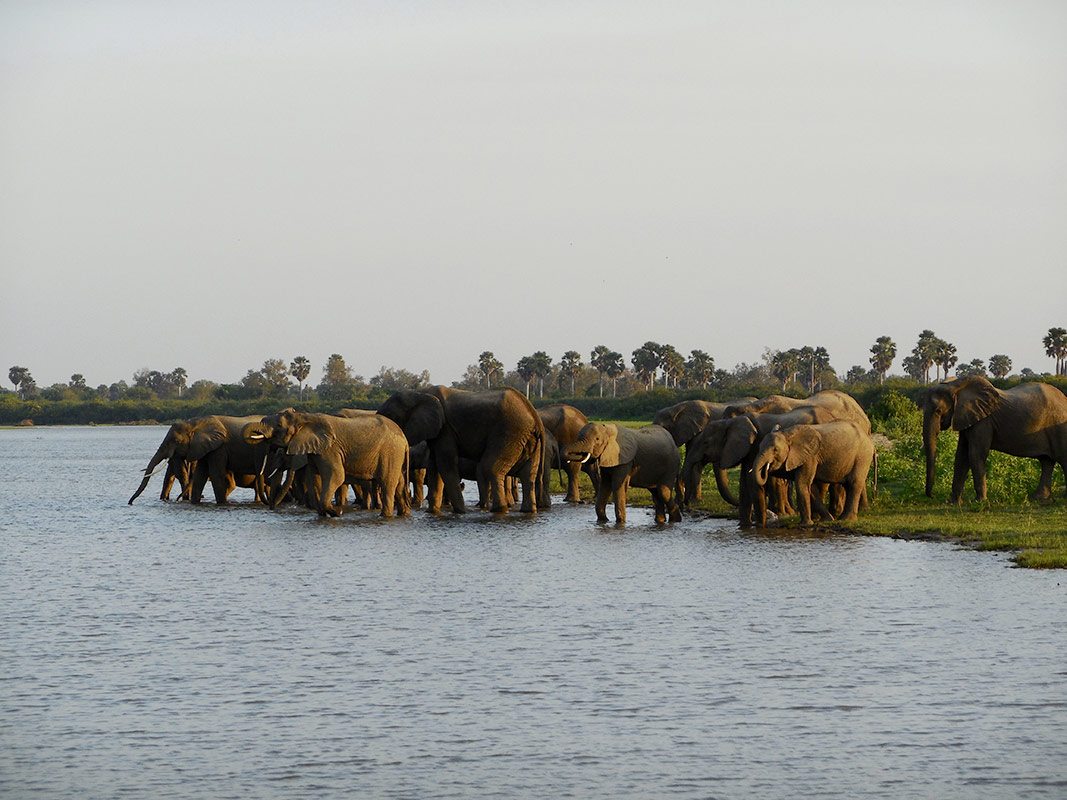
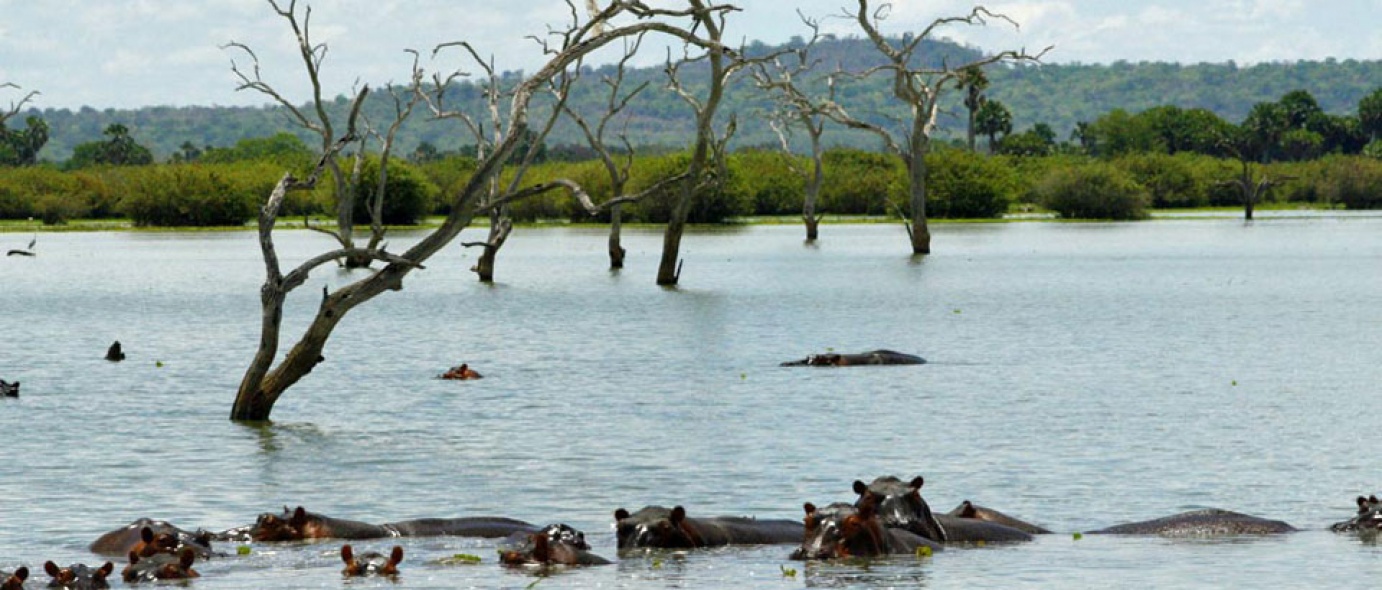
A pair of fish eagles guards the gentle bay, their distinctive black, white and chestnut feather pattern gleaming boldly in the morning sun. Suddenly, the birds toss back their heads in a piercing, evocative duet. On the sandbank below, a well-fed monster of a crocodile snaps to life, startled from its nap. It stampedes through the crunchy undergrowth, crashing into the water in front of the boat, invisible except for a pair of sentry-post eyes that peek menacingly above the surface to monitor our movements.
Rubondo Island is tucked in the southwest corner of Lake Victoria, the world's second-largest lake, an inland sea sprawling between Tanzania, Uganda and Kenya. With nine smaller islands under its wing, Rubondo protects precious fish breeding grounds.
Tasty tilapia form the staple diet of the yellow-spotted otters that frolic in the island’s rocky coves, while rapacious Nile perch, some weighing more than 100kg, tempt recreational game fishermen seeking world record catches. Rubondo is more than a water wonderland. Deserted sandy beaches nestle against a cloak of virgin forest, where dappled bushbuck move fleet yet silent through a maze of tamarinds, wild palms, and sycamore figs strung with a cage of trailing taproots.
The shaggy-coated aquatic sitatunga, elsewhere the most elusive of antelopes, is remarkably easily observed, not only in the papyrus swamps it normally inhabits, but also in the forest interior. Birds are everywhere.
Flocks of African grey parrots – released onto the island after they were confiscated from illegal exporters – screech in comic discord as they flap furiously between the trees. The azure brilliance of a malachite kingfisher perched low on the reeds competes with the glamorous, flowing tail of a paradise flycatcher as it flits through the lakeshore forest. Herons, storks and spoonbills proliferate in the swampy lake fringes, supplemented by thousands of Eurasian migrants during the northern winter.
Wild jasmine, 40 different orchids and a smorgasbord of sweet, indefinable smells emanate from the forest.
Ninety percent of the park is humid forest; the remainder ranges from open grassland to lakeside papyrus beds.
A number of indigenous mammal species - hippo, velvet monkey, genet and mongoose - share their protected habitat with introduced species such as chimpanzee, black-and-white colobus, elephant and giraffe, all of which benefit from Rubondo's inaccessibility.